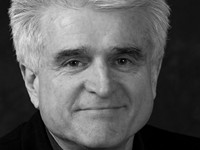In this article I am exploring three zones we can be in during a consulting engagement. I am trying to find out how to stay as long as possible in the Flow zone.
The title of this article almost sounds like one of the latest trends in fitness. Not quite. The last time I was over in Atlanta I interviewed Daryl Conner on the use of degrees and certifications for our profession. He got me thinking about the difference between what we do and who we are as an organizational change practitioner. Our presence as an organizational change practitioner matters. What do we represent when we are working for a customer?
Are we committed to doing what the customer tells us to do, or are we practicing our craft? At first sight this is an either / or question, but when we look closer there are some moments when it becomes an ‘and’ situation. That is: when practicing the craft, consciously – and satisfying our customer come together. In the below drawing I have indicated it as ‘Flow’.

Our job is not to make the lives of our customers easy. Our job is to help them make informed decisions. That is what practicing our craft is about. The drawing helps me to clarify that there are three areas that I can find myself in when I am working with a customer. They are:
- Strength Of Character: this is the term that I borrowed from Daryl Conner. To me it comes down to having the courage to confront the customer with the facts of my analysis. But it goes deeper than that. It’s also the pursuit of an attitude of humble inquiry.
- Flow: This is what happens when all the values I embody as an organizational change practitioner are in resonance with the customer’s intentions. It’s the definition of a fulfilling workday; a feeling of having contributed topped with the feedback that it mattered.
- False Yes: saying yes when we should have said no. This is what gets us and/or the customer into trouble in the long run.
Clearly, the ‘Flow’ part is what we are after every day. But how can we make sure that we spend most of the time in that zone and how can we keep ourselves out of trouble when we get out of that zone?
Being conscious of the zone we are in is a good starting point. All customer engagements are different and the challenges are complex – most of the times, this is why the customer hired us. If we want to practice our craft, it’s essential to develop an internal GPS that tells us what zone we are in. We all know that it’s not easy to keep our head bove the clouds. The question we should be stalking ourselves with is: what am I being in service of right now? Am I practicing the craft?
Finally, it’s important to involve the customer in this journey from the beginning. Be explicit about the relationship you are trying to foster. Be clear about the fact that a relationship of trust does not automatically mean that you will be in agreement all of the time. Establishing a relationship of trust that allows for disagreement will increase the time you will be spending in the flow zone.


